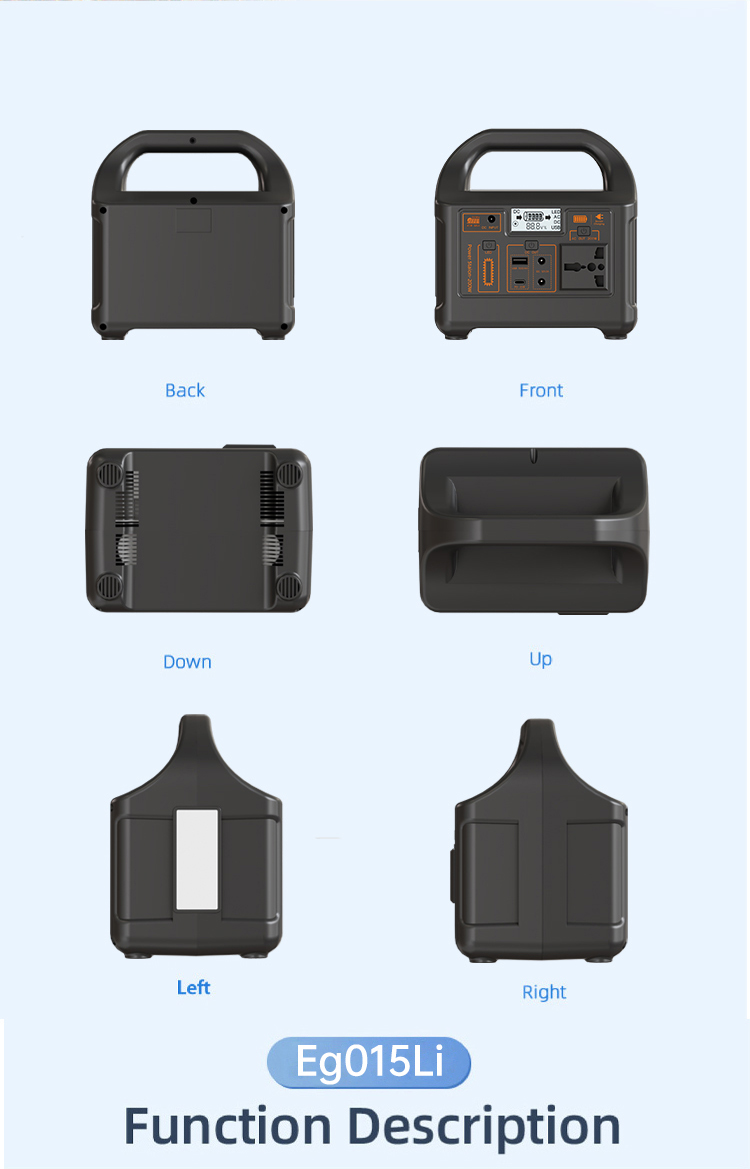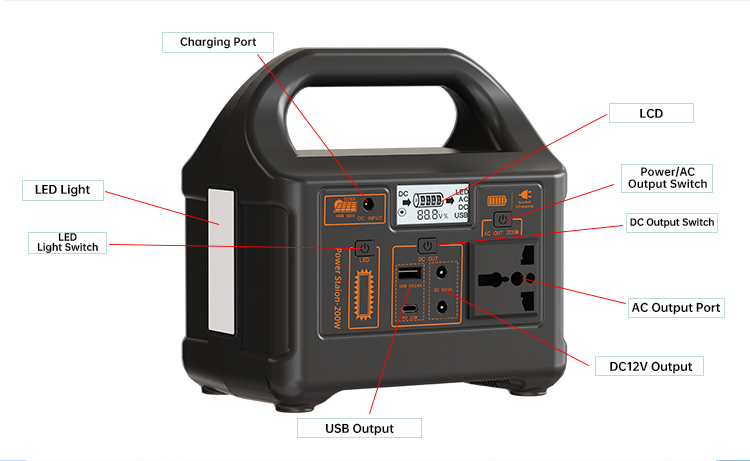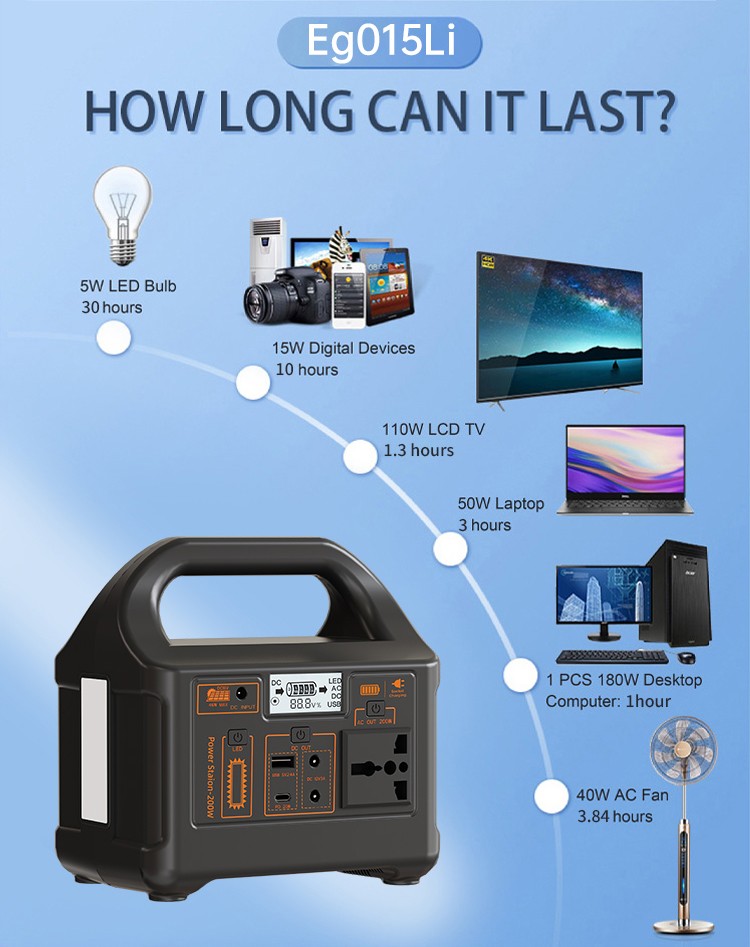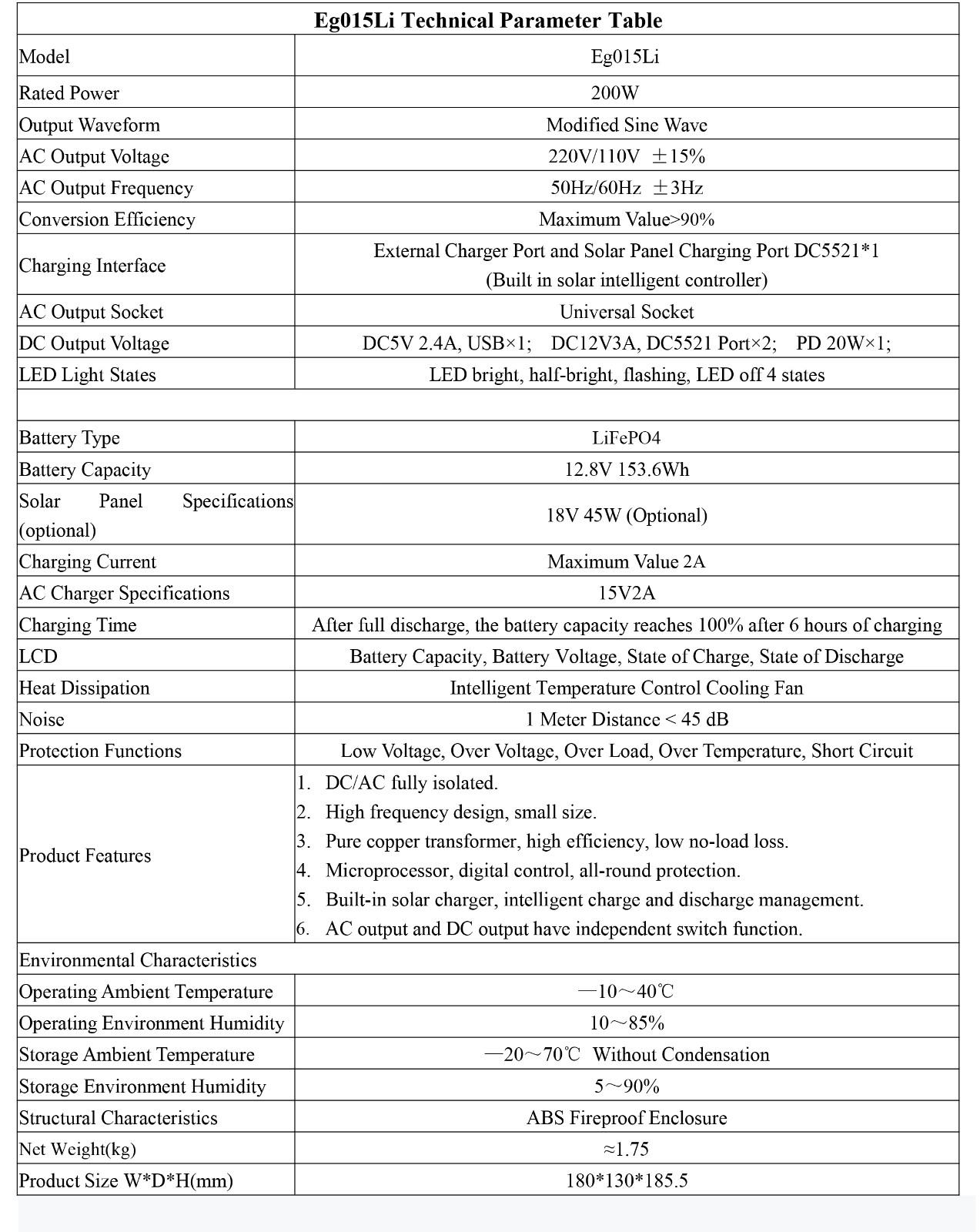1. Direct constraints of the inverter on the AC interface
The only energy channel of the AC interface
The power of the AC interface (such as a 220V socket) must be output through the inverter (DC-AC conversion module), so its power is strictly limited by the rated power of the inverter. For example, if the nominal continuous power of the inverter is 500W, the total output power of all AC interfaces cannot exceed 500W. When the AC interface is running at full load (such as using an electric kettle and a projector at the same time), the power distribution of other interfaces (such as DC, Type-C PD) needs to be adjusted within the remaining power range of the inverter, or rely on independent circuits to directly draw power from the battery.
Instantaneous support of peak power
The peak power of the inverter (usually 2-3 times the rated power) can temporarily support high instantaneous loads (such as motor starting). For example, a power supply has a nominal continuous power of 500W and a peak power of 1000W. When starting an electric drill that requires 800W instantaneous power, the inverter can temporarily provide this power, but the power of other interfaces may be temporarily limited to avoid the total load exceeding the battery capacity.
2. Possibility of power superposition of independent circuits
Independent power supply path of DC/Type-C interface
DC interface (such as 12V car charger) and Type-C PD interface are usually powered by independent DC-DC converters without passing through the inverter. The power of this type of interface can be superimposed with the inverter power, but it must meet the total discharge capacity of the battery. For example, a power inverter of a power supply has a power of 300W, and supports 100W DC output and 65W Type-C PD output at the same time. If the maximum discharge power of the battery is 500W, the total output can reach 300+100+65=465W.
Dual circuit design of high-end products
Some high-end power supplies use dual inverters or independent circuit modules to completely isolate the AC interface from the DC/Type-C interface. For example, a power supply is equipped with a 500W main inverter and a 200W auxiliary inverter, with a total output power of up to 700W, and the interfaces do not interfere with each other.






